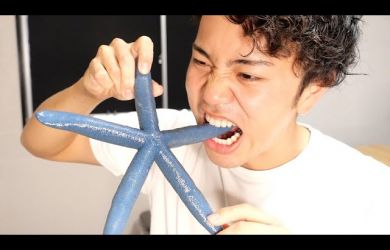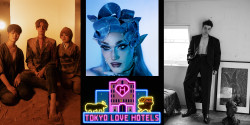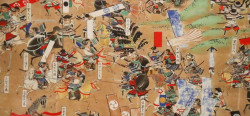
May 20, 2010
Prophet Motive
Visionary trend forecaster Li Edelkoort has helped companies like Coca-Cola, Nissan and Gucci anticipate market shifts and keep ahead of their competitors. In a groundbreaking Tokyo exhibition, she offers up “an archaeology of the future”
By Metropolis
Future Visions
“Post Fossil” features 130 works by 71 designers. Here are some of the talents to watch out for:
Marijn van der Poll was born in Eindhoven but grew up in Saudi Arabia, Indonesia and Singapore. After studying at the Design Academy Eindhoven, he set up his own studio in 2000. For this show he has contributed “Do Hit” (1999), a square cube of stainless metal that can be hammered into a crude chair shape, emphasizing the need for users to be proactive and interact with design. www.marijnvanderpoll.com
Rotterdam-based Joep van Lieshout transcends the labels of “contemporary artist,” “designer” and “architect.” Often featuring human figures, his work uses humor to achieve its effect. “Family Lamp” (2007) shows the beauty of a simple, archaic design applied to an everyday household object, an approach that also admits an element of what he likes to call “absence of design.” www.ateliervanlieshout.com
Jan Eric Visser has been converting his household waste into works of art since 1986. His concept of “form follows garbage” challenges the industry mantra of “form follows function.” “Aquadyne Sculpture” (2008) uses recycled plastic with the characteristics of natural materials to create an antiquated shelter that harks back to the dawn of civilization. www.janericvisser.nl
German designer Georg Panther studied at Bauhaus University in Weimar before setting up the duundduDESIGN firm. For “Post-Fossil,” he contributes “Rocky” (2009), a leather punching bag that takes its inspiration from the movie of the same name. The shape resembles slaughtered bovines and is designed to make the viewer pay a conscious tribute to the animals that we use unthinkingly for our daily needs. www.duunddu.com
A similar idea can be found in the work of Niels van Eijk, a graduate of the Design Academy Eindhoven. His “Cow Chair” (1997) emphasizes the basics by stretching a single untreated hide around a frame, which is then soaked and dried to create an abstract and prehistoric-looking effect. Once again, man’s necessary exploitation of nature is made explicit. www.ons-adres.nl
Strongly expressing the atavistic theme that runs throughout this exhibition is Guus van Leeuwe, a Dutch designer whose focus is reinventing domestic products. Creating radiators shaped like animals, he reminds us of a time when people lived with their livestock in order to profit from their animals’ body heat. www.gewoonguus.nl
Ilse Crawford is a creative director, designer, brand maker, writer and teacher. Asked to rethink modernist designer Alvar Aalto’s iconic “Armchair 400” (1935), she emphasized its Finnish origins by using abundant reindeer skin, giving the prosaic object a powerful new twist. www.studioilse.com
When he was a student, Bulgarian designer Nikola Nikolov worked part-time as a dishwasher, collecting broken kitchen items and binding them together to make objets d’art. Nikolov has since developed this theme of working with discarded materials—and the memories they evoke—into his Studio-Re-Creation. For this show, “White Jack Rabbit” (2009) uses recycled pieces of wooden furniture (like infants’ beds and chairs) to create a sculpture with a lot of animist power. www.studio-re-creation.com
Sayaka Yamamoto, who works with Israeli designer Boaz Cohen as part of the Eindhoven-based BCXSY cooperative, is the show’s lone Japanese representative. The “Living with Dinosaurs” (2008) series is comprised of abstract, archaic-looking interior objects made from coated polyurethane sponge that evoke dinosaur bones and fossils. www.bcxsy.com
With a name that nobody can forget, Swedish designer Karin Frankenstein has a lot to live up to. Her “Cow Dung Shelf & Chair” (2008) shows that she also has a daring imagination and good aesthetic sense. Employing a mix of clay, sand and cow dung—a combination often used as a building material in primitive societies—she creates funky furniture with a fascinating texture and an element of frisson. www.karinfrankenstein.se
Born in the Netherlands in 1978, Pieke Bergmans is interested in the blurred points at which art and design converge and design and industry interact. She also explores genre-hopping in works like “Crystal Virus” (2007), which conflates blown glass and furniture design, reveling in the clash of materials as the hot glass sears the wooden surfaces to create damaged textures. www.piekebergmans.com
21_21 Design Sight Post Fossil: Excavating 21st Century Creation. Directed by Li Edelkoort. Various media. Until June 27, free (elem and under)/¥500 (MS, HS)/¥800 (univ)/¥1,000 (adult). Tokyo Midtown, 9-7-6 Akasaka, Minato-ku. Tel: 03-3475-2121. Open Wed-Mon 11am-8pm, closed Tue. Nearest stn: Nogizaka. www.2121designsight.jp







